Faucaria Tigrina Tiger Jaws Succulent Live Plant :
Faucaria tigrina, commonly known as Tiger Jaws, is a striking succulent plant native to South Africa. It’s recognized for its unique, tooth-like projections along the edges of its leaves, giving it the appearance of a “tiger’s jaw,” which is how it earned its common name. The plant’s fascinating appearance and relatively low maintenance make it a popular choice for succulent enthusiasts.
Faucaria Tigrina Tiger Jaws Succulent Live Plant Overview
- Common Name: Tiger Jaws, Tiger Tooth, or Tiger’s Jaw
- Scientific Name: Faucaria tigrina
- Family: Aizoaceae
- Native Habitat: South Africa
- Growth Habit: Low-growing, rosette-forming succulent
Appearance
- Leaves: The plant’s fleshy, triangular leaves have distinctive white, tooth-like projections (called “teeth”) along their edges. These “tiger jaws” make the plant look like a mouth with teeth.
- Color: The leaves are typically a light green or grayish-green, often tinged with reddish-brown hues when stressed or exposed to bright sunlight.
- Flowers: Faucaria tigrina produces beautiful, daisy-like yellow flowers in the fall or early winter, typically blooming in clusters. These flowers attract pollinators like bees and butterflies.
Care Guide for Faucaria Tigrina Tiger Jaws Succulent Live Plant
1. Light Requirements
- Bright, Indirect Light: Tiger Jaws thrive in bright, indirect sunlight. They can handle a few hours of direct sunlight each day, but too much direct exposure can scorch the leaves. A windowsill with morning or late afternoon sun is perfect.
- Signs of Insufficient Light: If the plant becomes leggy or starts to stretch out, it’s a sign it’s not getting enough light.
2. Watering
- Watering Schedule: Tiger Jaws, like most succulents, prefer to be watered deeply but infrequently. Wait for the soil to dry out completely before watering again. During the growing season (spring to fall), watering every 2-3 weeks should suffice, while in winter, reduce watering to once a month or less.
- Avoid Overwatering: Overwatering is a common mistake and can lead to root rot. Always ensure the soil is dry before watering again.
- Watering Method: Water at the base of the plant, avoiding wetting the leaves to prevent rot.
3. Soil
- Well-Draining Soil: Tiger Jaws require well-draining soil to avoid water retention, which can lead to root rot. A cactus or succulent mix works well, or you can add perlite or sand to regular potting soil for better drainage.
- Pot with Drainage: Always use a pot with drainage holes to ensure that water doesn’t accumulate at the bottom of the container.
4. Temperature
- Warm Temperatures: Faucaria tigrina thrives in warm conditions, ideally between 60°F to 85°F (16°C to 29°C). It can tolerate brief periods of cooler temperatures, but it should be protected from frost, which can damage the plant.
- Winter Dormancy: Like many succulents, Tiger Jaws may enter a period of dormancy during the winter months when growth slows down. Reduce watering during this time and avoid fertilizing.
5. Fertilization
- Minimal Fertilizer: Fertilize Faucaria tigrina Tiger Jaws sparingly. Use a diluted, balanced fertilizer once or twice during the growing season (spring through summer). Too much fertilizer can harm the plant, causing it to become weak and leggy.
- Avoid Fertilizing in Winter: Do not fertilize during the dormant period (fall and winter).
6. Propagation
- Leaf Cuttings: Faucaria tigrina Tiger Jaws Succulent can be propagated by leaf cuttings. To do this, cut a healthy leaf and allow it to dry out for a few days to form a callus. Then, plant it in a well-draining potting mix. Keep it in bright, indirect light and only water once the cutting has rooted.
- Offsets: This plant also produces offsets or “pups” around the base, which can be separated and planted as new plants.
7. Pests and Problems
- Pests: Faucaria tigrina Tiger Jaws Succulents are generally resistant to pests, but mealybugs, aphids, and spider mites can occasionally be an issue. If you notice pests, gently remove them with a cotton swab dipped in rubbing alcohol or use an insecticidal soap.
- Root Rot: As mentioned, the biggest issue with Tiger Jaws is overwatering. Ensure that the plant is in a well-draining pot and that you don’t water too frequently.
- Etiolation (Stretching): If the plant isn’t getting enough light, it can become stretched out and leggy. To correct this, move it to a brighter location.
Additional Tips
- Repotting: Repotting should be done when the plant outgrows its pot, typically every 2-3 years. Choose a pot that’s only slightly larger than the current one to avoid excessive moisture retention.
- Companion Plants: Faucaria tigrina Tiger Jaws Succulent pairs well with other drought-tolerant plants, such as other succulents or cacti

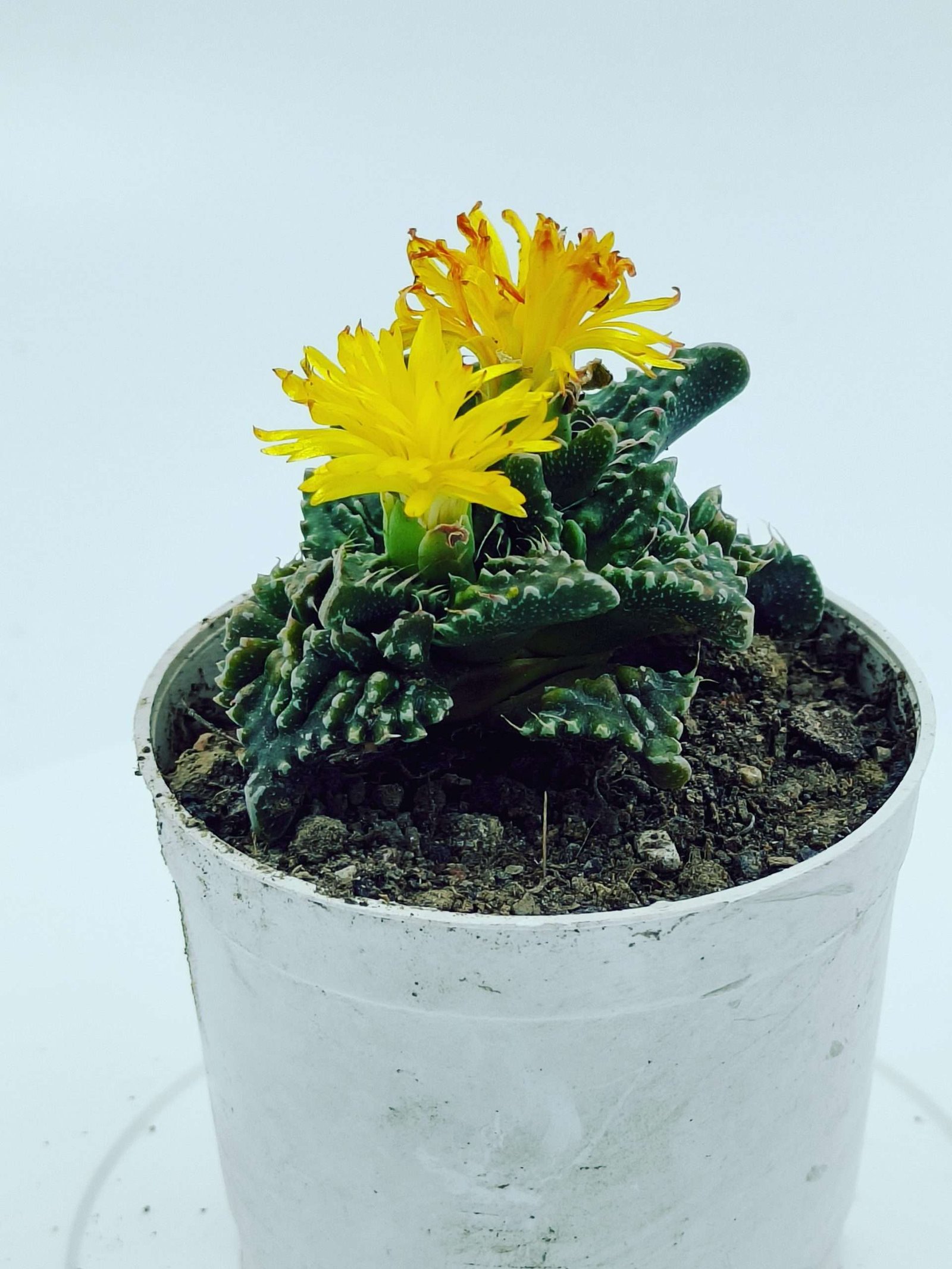
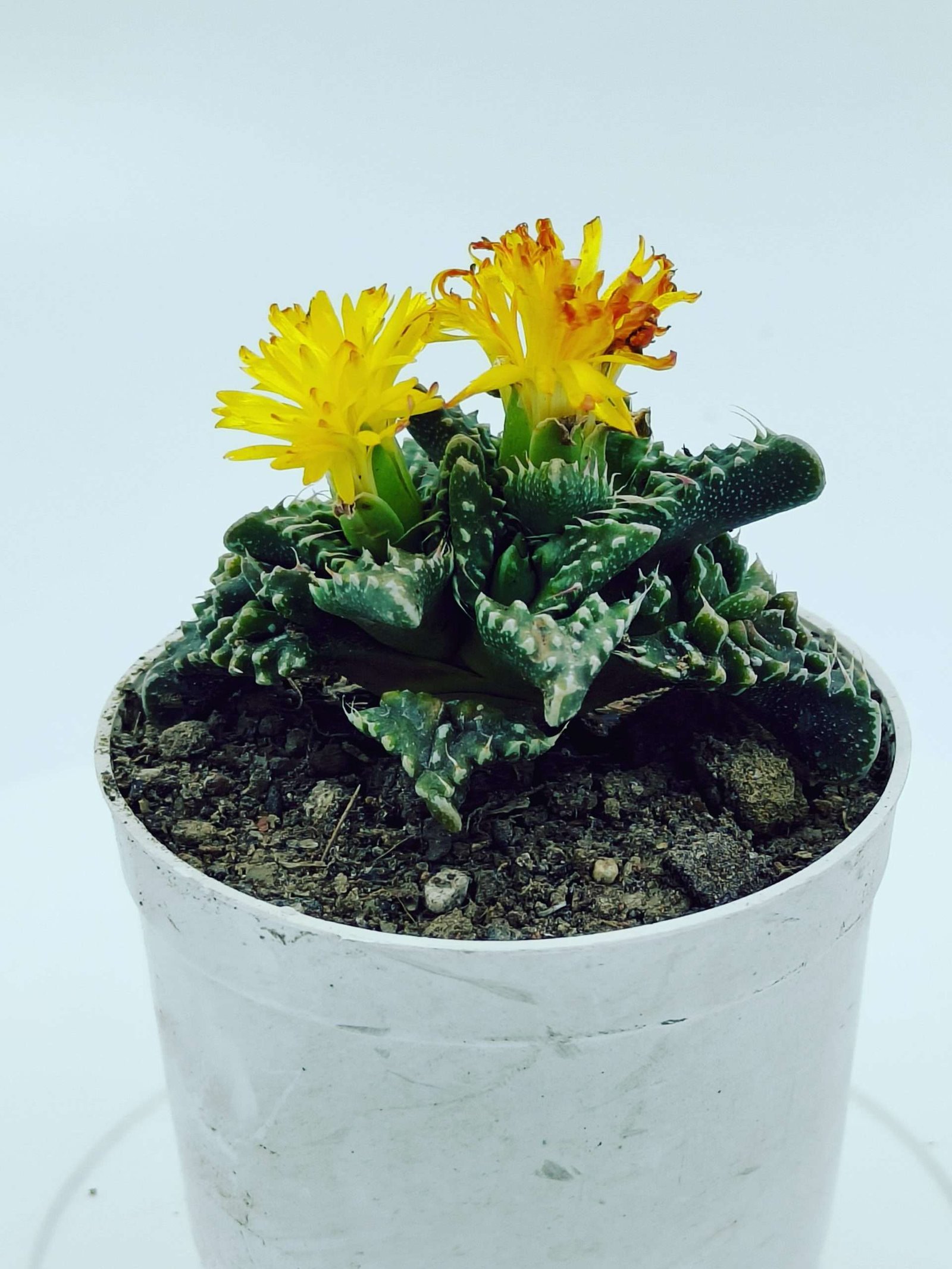
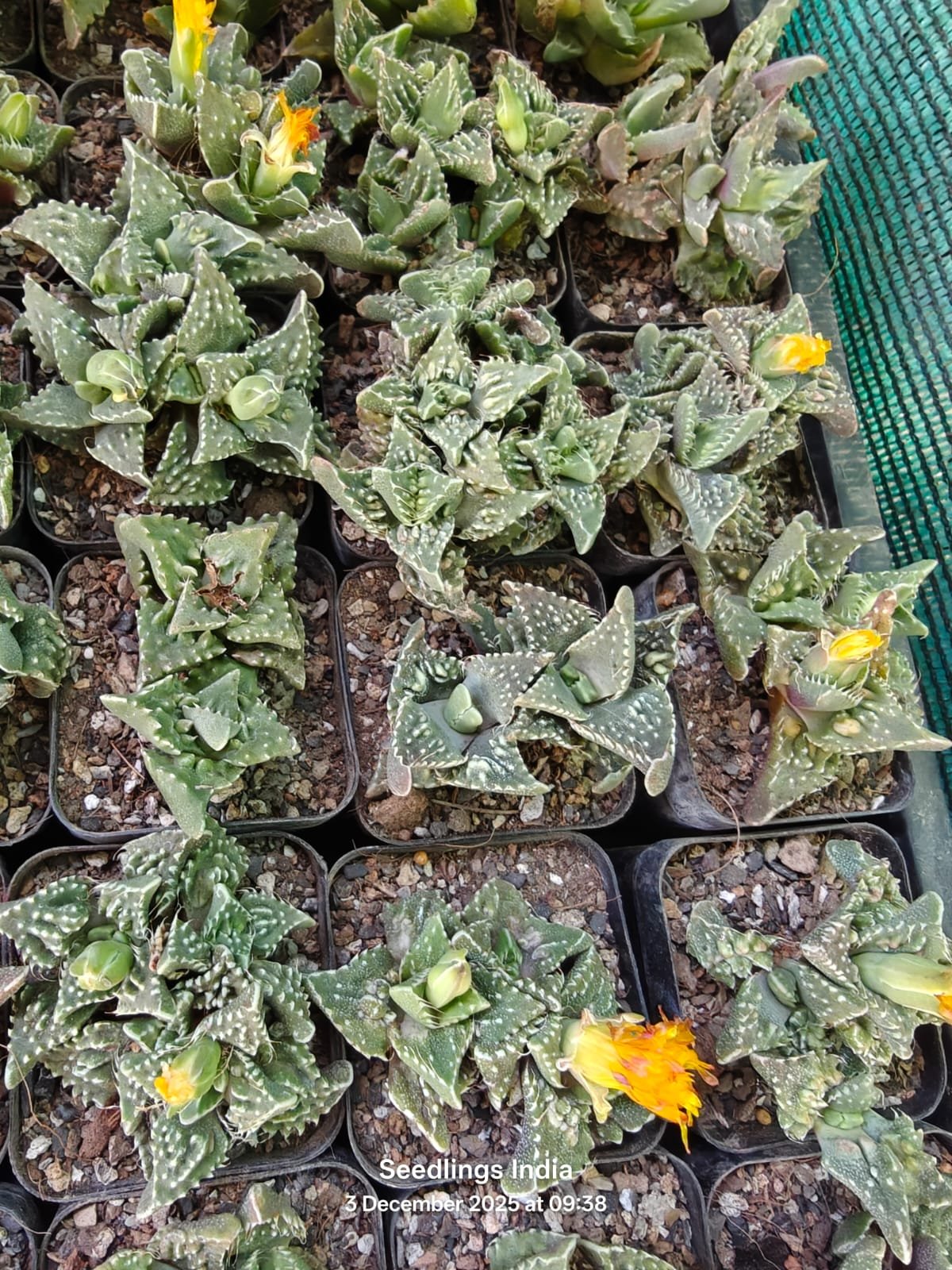
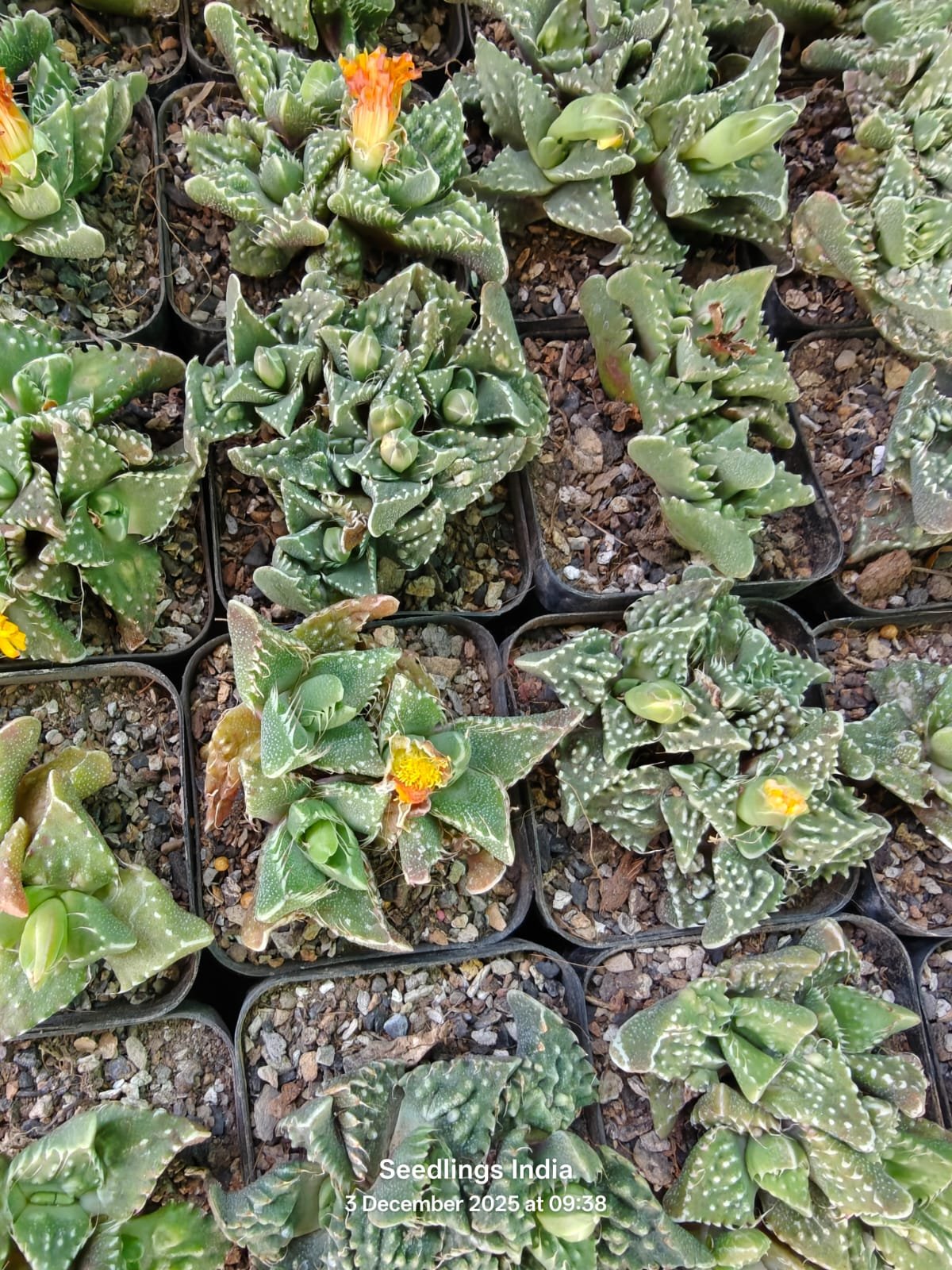


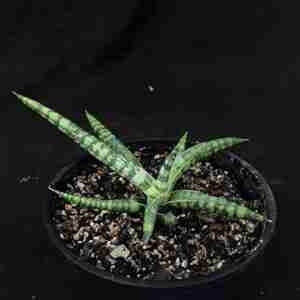

Reviews
There are no reviews yet.